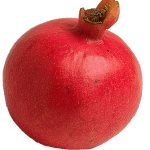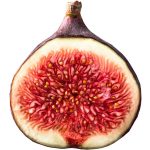Growing fruit trees
Robin Gale-Baker, from Sustainable Macleod, discusses growing various fruit trees. This is one of a series of articles she has written about growing fruit trees (see right hand sidebar). She has also written a number of articles about growing various vegetables, growing various herbs and general growing techniques.
Tending the raspberry patch
 Now that winter is here, its time to tend the raspberry patch. First, you will need to know whether your raspberries are autumn varieties (e.g. Autumn Bliss, Autumn Heritage) or summer (e.g. Chilicotin, Chiliwack, Willamette) as they are treated in different ways. Both require wire supports. Autumn varieties prefer 2 sets of parallel wires each with 3 strands at intervals of 60cm and the taller summer varieties a single set of parallel wires with 4 strands at an interval of 50cm. Autumn varieties fruit on first year canes called primocanes and are usually pruned to ground level after leaf fall – pruning earlier or much later than leaf fall reduces the crop the following season. After pruning, add well composted manure to the bed. Then, in the spring when the canes reach 60cm in height, tip prune them and tie them to one of the horizontal wires – this will result in branching and more berries. Summer varieties fruit on second year canes called floricanes and are more complicated to prune. Canes that have fruited won’t fruit again, so look for dry, brown canes and prune these back to ground level. At the same time, look for new shoots or canes which will be green and tie them to your horizontal wire. Then tip prune them and fertilise with well composted manure. Both autumn and summer raspberries sucker. The suckers should be removed to keep the strength in the main cane. Cut the suckers rather than pull them.
Now that winter is here, its time to tend the raspberry patch. First, you will need to know whether your raspberries are autumn varieties (e.g. Autumn Bliss, Autumn Heritage) or summer (e.g. Chilicotin, Chiliwack, Willamette) as they are treated in different ways. Both require wire supports. Autumn varieties prefer 2 sets of parallel wires each with 3 strands at intervals of 60cm and the taller summer varieties a single set of parallel wires with 4 strands at an interval of 50cm. Autumn varieties fruit on first year canes called primocanes and are usually pruned to ground level after leaf fall – pruning earlier or much later than leaf fall reduces the crop the following season. After pruning, add well composted manure to the bed. Then, in the spring when the canes reach 60cm in height, tip prune them and tie them to one of the horizontal wires – this will result in branching and more berries. Summer varieties fruit on second year canes called floricanes and are more complicated to prune. Canes that have fruited won’t fruit again, so look for dry, brown canes and prune these back to ground level. At the same time, look for new shoots or canes which will be green and tie them to your horizontal wire. Then tip prune them and fertilise with well composted manure. Both autumn and summer raspberries sucker. The suckers should be removed to keep the strength in the main cane. Cut the suckers rather than pull them.
Which fruits continue to ripen after being picked?
 Pomegranates and figs are ripening beautifully at this time of year but must ripen on the tree (they do not continue to mature once picked). How do you know when they are ready? In the case of pomegranates, look for split skins. Once this happens to a few on the tree, all will be ready. It is worth investing in a pomegranate press (available online for less than $60) to extract the juice as the press will avoid inclusion of any of the bitter pith which ruins the taste. In the case of figs, look for wilting of the stem and give a gentle squeeze for softness. Note that pomegranates and figs that look like they are ready by colour often still have a way to go.
Pomegranates and figs are ripening beautifully at this time of year but must ripen on the tree (they do not continue to mature once picked). How do you know when they are ready? In the case of pomegranates, look for split skins. Once this happens to a few on the tree, all will be ready. It is worth investing in a pomegranate press (available online for less than $60) to extract the juice as the press will avoid inclusion of any of the bitter pith which ruins the taste. In the case of figs, look for wilting of the stem and give a gentle squeeze for softness. Note that pomegranates and figs that look like they are ready by colour often still have a way to go.
 [Editor’s note: fruits that continues to ripen after being picked are called ‘climacteric’, whilst fruits that stop ripening after being picked are called ‘non-climacteric’. The archetypal climacteric fruit are tomatoes and bananas. Avocados, peaches and plums are also climacteric. The archetypal non-climacteric fruit are citrus. Grapes and all the curcubits (cucumbers, pumpkins, etc) are also non-climacteric. For each fruit, our North East Melbourne fruiting schedule lists whether it is climacteric or not. Climacteric fruit will typically only continue to ripen if kept at room temperature so you can defer this by putting them into the fridge until you want them to ripen.]
[Editor’s note: fruits that continues to ripen after being picked are called ‘climacteric’, whilst fruits that stop ripening after being picked are called ‘non-climacteric’. The archetypal climacteric fruit are tomatoes and bananas. Avocados, peaches and plums are also climacteric. The archetypal non-climacteric fruit are citrus. Grapes and all the curcubits (cucumbers, pumpkins, etc) are also non-climacteric. For each fruit, our North East Melbourne fruiting schedule lists whether it is climacteric or not. Climacteric fruit will typically only continue to ripen if kept at room temperature so you can defer this by putting them into the fridge until you want them to ripen.]
[Editor’s second note: have you ever seen the flower of a fig tree? The answer is ‘no’ because the flowers are actually inside the fig (and the fig is therefore not technically a fruit). Whilst common figs do not require pollination, they do not taste that good. Rather, the best tasting type – Smyrna – does require pollination. But it only has female flowers so needs to be pollinated by a wild/caprifig (whose fruit are inedible). As the flowers inside the fig are inaccessible to all normal pollen vectors, pollination is done by tiny wasps. The wasps hatch in the caprifig, then mate, then the females leave to find new figs to lay their eggs in. As they leave, they get covered in pollen, and pollinate the next fig that they enter. If it is a caprifig, then baby wasps are born but no edible fruit results. If, however, it is a Smyrna, then edible fruit results but no baby wasps are born (the Smyrna flowers are too long for the wasp to lay its eggs in). Luckily for you, the female fig produces an enzyme that digests the dead wasps completely and so the crunchy bits inside a fig are seeds, not wasp parts. For more info, watch this video.]
